Killer Cone Snails…For Your Health?
9:30 minutes
The tropical oceans of the world are strewn with the brightly colored and intricately patterned shells of cone snails—marine snails with more than 3,000 species worldwide. Within those opulent shells live fierce hunters armed with deadly venoms that can kill worms, fish, and even, in rare cases, people. But it turns out these venoms could also offer promising treatments for cancer and addiction-free options for chronic pain.
In this new video from Science Friday’s “Breakthrough: Portraits of Women in Science” series produced with the Howard Hughes Medical Institute, biochemist Mandë Holford talks about the delicate work of collecting snails to study, and how scientists are identifying useful compounds in snail venom and turning them into drugs.
See the killer cone snails in action below:
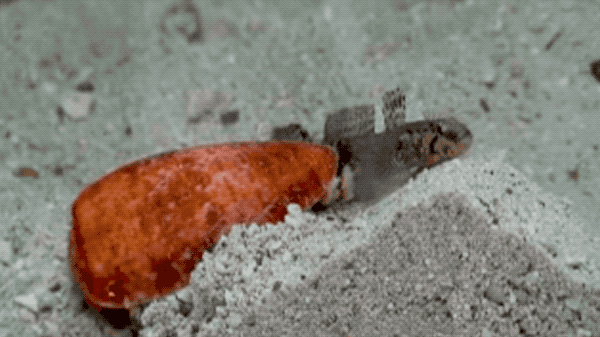
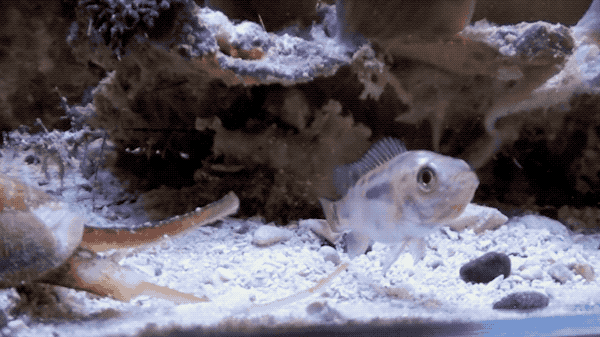
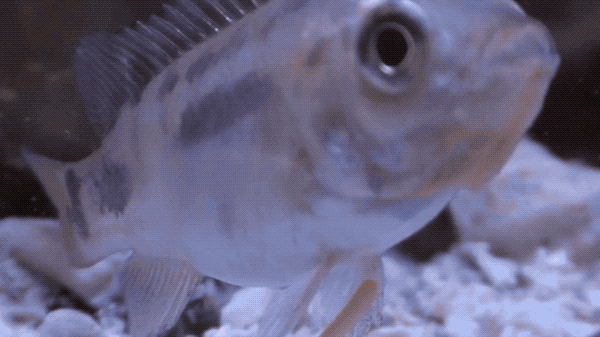
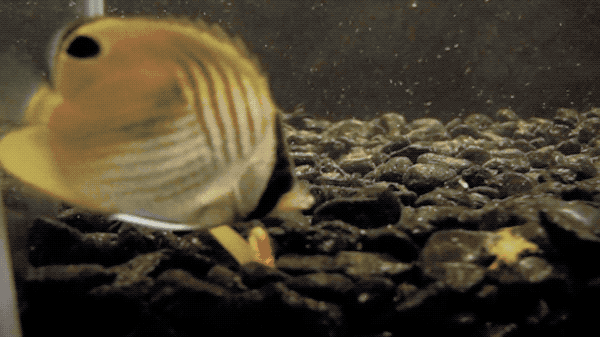
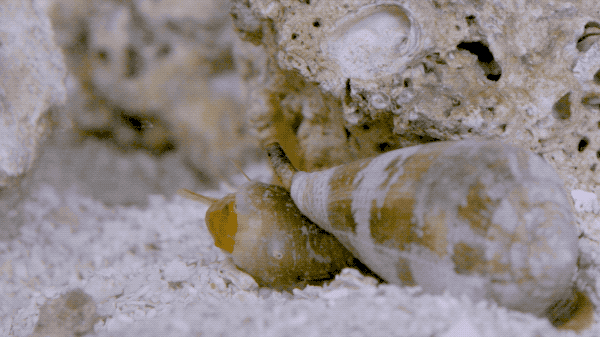
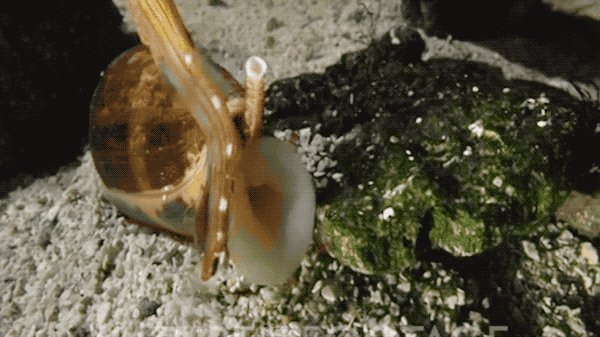
Watch the rest of the Breakthrough: Portraits Of Women In Science series.
Mandë Holford is an associate professor of chemistry and biochemistry at Hunter College. She’s also a research associate in comparative genomics of invertebrate zoology at the American Museum of Natural History. She’s based in New York City.
IRA FLATOW: And now, if you’ve ever been to the beach in the tropics, you’ve probably picked up these shells. You know what I’m talking about that. They’re cone-shaped. They’re brightly colored, intricately patterned houses of, well, snails, cone snails.
But if you ever find a shell with a snail inside, be very careful. Because every single species of cone snail is venomous. And some of them can even kill you, stinging with harpoon-like appendages. My next guest doesn’t run away from them. She collects these snails with– how, she uses salad tongs and scuba gloves, right?
MANDE HOLFORD: That’s correct.
IRA FLATOW: And studies their venom. Why? Because hidden in these deadly venom, she says, are compounds we might be able to use to treat chronic pain, even cancer. And she can’t wait to jump into the conversation. Mande Holford is with me. She’s associate professor of chemistry and biochemistry at Hunter College, and a research fellow at the American Museum of Natural History here in New York. Welcome, Mande.
MANDE HOLFORD: Hi, thanks for having me, Ira.
IRA FLATOW: Tell me how you pick these up, with the tongs? How do you–
MANDE HOLFORD: With the tongs, very carefully.
[LAUGHTER]
What’s nice is that the snails are not aggressive. So when you pick them up, they recoil into their shell. It’s only when they feel threatened that they’ll bring out the harpoon and try to envenomate you.
IRA FLATOW: We have a video of some of these snails in action. You can check that out on our website at sciencefriday.com/killersnails. Killer It’s part of our Breakthrough Series in collaboration with the Howard Hughes Medical Institution. And I mentioned the video of the work just now. It has some terrifying shots of snails hunting for food, but they’re swallowing fish whole?
MANDE HOLFORD: Completely.
IRA FLATOW: Wow, they don’t chew them, they just gulp them?
MANDE HOLFORD: No chewing, take them all in, like a child.
[LAUGHTER]
Then suck them all in.
IRA FLATOW: What size fish are we talking?
MANDE HOLFORD: They can swallow something their body size. And so they are not afraid to go out there. Well actually, what they do is kind of cool. They have a siphon, which is kind of like a sniffer, a nose. So they can smell if they’re spraying the water.
If they think there’s game to be had, then they’ll let out their proboscis, which is like a tongue. On the tip of the tongue is a harpoon, which they’ll then inject into the fish. And then they open their mouth, the rostrum, really wide, and swallow and engulf the whole thing.
IRA FLATOW: So is it dead before it’s eaten, because of the venom?
MANDE HOLFORD: No, no, no. What the venom is doing, it’s shutting down the physiological function of the fish. So it’s not dead, but it’s paralyzed. It’s going into, what we call, exitotoxic shock, sometimes. And then it gets swallowed whole. It’s like the worst death you could imagine.
[LAUGHTER]
There’s no escape.
IRA FLATOW: I see the movie right now.
MANDE HOLFORD: Yeah.
[LAUGHTER]
IRA FLATOW: Now, I know you’re studying the potential drug applications of these poisons. Why are they such good candidates?
MANDE HOLFORD: They’re great candidates for drugs because the venom itself is very potent. It acts very fast, and it’s very specific. So those are all the ingredients you look for when you’re making a drug. And evolutionarily over time, venom is sort of the result of an evolution’s arms race. And so they’re using biochemical warfare to perfect what they need to do.
And what they need to do is to either subdue a prey or defend themselves. And venom peptides– so the venom itself is not one thing. It’s several things. There are these peptides and proteins, which are very specific for hitting certain targets in the physiological system of their prey and also the physiological system of humans. And that’s why they’re such good drugs, because they can be very specific for specific targets.
IRA FLATOW: So you’re talking about using them, for what kinds of things might we use them?
MANDE HOLFORD: Well actually, what’s a really nice story is you can use– right now, there’s a drug from cone snails that could be used to treat the opioid epidemic that’s happening.
IRA FLATOW: No kidding.
MANDE HOLFORD: Yes, yes, yes.
IRA FLATOW: Tell me about that.
MANDE HOLFORD: It’s called zyconotide and it’s the first drug from the cone snails. It’s used to treat, right now, chronic pain in HIV and cancer patient. It has one serious drawback in its delivery. It has to be delivered via spinal tap.
But it’s 1,000 times more potent than morphine, and more importantly, it doesn’t cause addiction, right? Because it doesn’t work on the opioid receptor. It works on iron channels, so these are sort of like gates on your cells. And because of that difference, we can avoid altogether the addictive process that happens when you prescribe opioids and other– for treating pain.
IRA FLATOW: So if you can get it either simple injectable, or [INAUDIBLE], or oral, than that would be the trick.
MANDE HOLFORD: Exactly, and that’s sort of what we’re working on, too. We’re devising this Trojan horse, as I like to call it, that would shut all of the peptide. So the big thing about ziconotide is it doesn’t cross the blood brain barrier.
And that’s why you need to have the spinal tap, so it’s delivered directly into your central nervous system. And so what we’re trying to do is make this sort of Trojan horse nanocontainer to shuttle the peptide across the blood brain barrier and get it to where it needs to go.
IRA FLATOW: You know, we’ve done programs about other kinds of venoms from snakes, and even spiders we’ve talked about. This is a whole new thing.
MANDE HOLFORD: This is different.
IRA FLATOW: A different kind of venom here.
MANDE HOLFORD: Different kind of venom, but similar. So again, because they’ve evolved over time, we found that venom is actually convergent. That means nature has done this over, and over, and over again. And we’ve seen venom evolve in over 90 different animals. Because venom is genetic, it’s encoded, so it can be shared by animals, as opposed to poison, right? So poison–
IRA FLATOW: Ah, difference.
MANDE HOLFORD: Very different. [LAUGHS] Poison is usually sequestered or eaten, like poison dart frogs. They, themselves, are not dangerous, but it’s what they eat that makes them so lethal. And so with venom, you have something genetically coded that can be traced throughout time, and evolution, and passed from one animal to another. And so while the venom from snails is slightly different from venom from snakes, they have similar components.
IRA FLATOW: I’m Ira Flatow. This is Science Friday from PRI, Public Radio International, talking with Mande Holford about killer snail venom.
MANDE HOLFORD: Killer snails. [LAUGHS]
IRA FLATOW: How did you get interested in it?
MANDE HOLFORD: I saw that video of a snail eating a fish from Toto Olivera, who I like to call the godfather of snails. [LAUGHS] So he’s been working with snail venom for past 30, 40 years now. He’s from the Philippines.
And a lot of Filipino fishermen were dying in the 70s, and they weren’t sure why. And it was because these snails were getting caught in the fishing nets. And when the guys went in to retrieve their catch, they would get harpooned, and they would fade away and die. So there’s no anti-venom. So killer snails really means killer snails.
IRA FLATOW: Really?
MANDE HOLFORD: Yeah.
IRA FLATOW: And what about cancer research? Anything you could use the venom there for?
MANDE HOLFORD: Oh, yeah, no, so this is a really new, exciting thing for how we can use venom to treat cancer. And it’s because, like I was talking about the channels on cells, tumor cells have channels that are usually specific compared to normal cells. And so these peptides are very good at targeting the channels on tumor cells that are not on normal cells, or are upregulated on tumor cells compared to normal cells.
And it’s the specificity, again, of the peptides, because, again, they’ve been evolved for years to be able to do what they do. And the specificity for particular targets means that we can now use them to treat cancer, in that they would target tumor cells to shut down things like proliferation or [? vascularation, ?] bringing blood vessels to the tumors that lead to it being able to propagate.
IRA FLATOW: I see you don’t get very excited about this.
MANDE HOLFORD: Oh no, just a little.
[LAUGHTER]
IRA FLATOW: I know. I see that you also teach a course in science diplomacy here in New York.
MANDE HOLFORD: I do!
IRA FLATOW: What does that got to do with killer snails?
MANDE HOLFORD: It has everything to do with killer snails!
IRA FLATOW: Well, tell me.
MANDE HOLFORD: So we go out on expeditions to collect the snails in Papua New Guinea or Indo-Pacific in Panama. And to do that, you need to do permits, you have to deal with a lot of governance in the foreign countries to allow you, first of all, to be able to go. And then second, to be able to bring back samples with you. And in order to do that, scientists have to work on a level that they normally don’t want to work with, which is bureaucracy. [LAUGHS]
IRA FLATOW: Right. But they’re used to filling out paperwork.
MANDE HOLFORD: Well we have to. We’re used to filling out paperwork. But it’s important. Because, like for example, things like, when we want to be able to access and gain– But if we were to find something, like this drug ziconotide, it came from the Philippines, but it was developed all here in the United States. So who should benefit from that, right? Should it be–
IRA FLATOW: Intellectual property question.
MANDE HOLFORD: Intellectual property question, and so these are the kinds of issues we talk about in science diplomacy. So your science, while it might have a very local, immediate action at the bench, it can have very wide, global reach and implications, and from everything from drug development to global health
IRA FLATOW: I’m holding a snail shell in my hands. It’s very heavy, pretty big shell. Where would I find this around?
MANDE HOLFORD: This, what you’re holding is a terebrate snail, and this one you would find in Indo-Pacific, mostly in the Philippines. They’re that big in the Philippines, usually.
IRA FLATOW: Wow, it’s six inches long or more than that.
MANDE HOLFORD: Yeah, exactly.
IRA FLATOW: It’s a heavy snail. So I don’t have to worry about going to the beach here?
MANDE HOLFORD: No, in New York, you’re fine. I mean, our waters are way too cold. There are other reasons to not go into Coney Island waters, but not these snails.
[LAUGHTER]
IRA FLATOW: I’m going to leave it at that, before we get really in trouble. Mande Holford is associate professor of chemistry and biochemistry at Hunter College and a research fellow at the famous American Museum of Natural History here in New York. Thank you, this is quite fascinating.
MANDE HOLFORD: Thank you so much for having me.
IRA FLATOW: She’s also featured in our latest video on our Breakthrough Series produced in collaboration with the Howard Hughes Medical Institute. And you can check it out and watch this snail eat a fish– it’s amazing– at sciencefriday.com/killersnails.
Copyright © 2017 Science Friday Initiative. All rights reserved. Science Friday transcripts are produced on a tight deadline by 3Play Media. Fidelity to the original aired/published audio or video file might vary, and text might be updated or amended in the future. For the authoritative record of Science Friday’s programming, please visit the original aired/published recording. For terms of use and more information, visit our policies pages at http://www.sciencefriday.com/about/policies/
Christie Taylor was a producer for Science Friday. Her days involved diligent research, too many phone calls for an introvert, and asking scientists if they have any audio of that narwhal heartbeat.